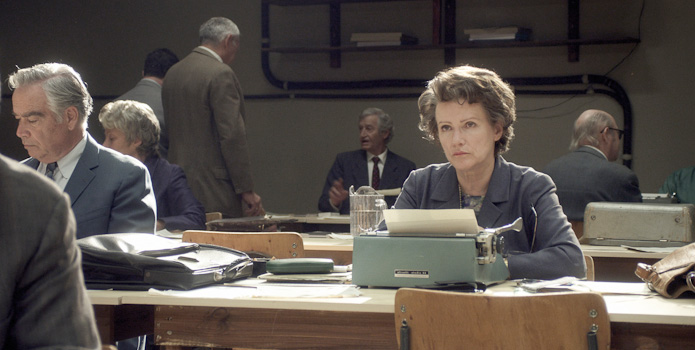
Lee Daniels’ The Butler is an entertaining and satisfying epic that explores the issue of race in America as reflected in the experiences of two men – a man who escaped a Southern cotton farm to become a butler at the White House (Forest Whitaker) and his son (David Oyelowo), who becomes engaged with the racial justice movement from the 60s through the 90s.
What The Butler gets right is the overall sweep of history, and it shines as an accessible history lesson. We get a taste of American race relations from the 1920s onward, and we glimpse the key moments in Civil Rights history: Little Rock school desegregation, lunch counter sit-ins, Freedom Rides, the JFK and LBJ civil rights speeches and legislation, the King assassination, urban riots, Black Power and anti-apartheid activism. The perspectives of the two main characters mirror those of Booker T Washington and W.E.B. DuBois.
Most importantly, The Butler reveals the African-American community as not monolithic, but with different (and conflicting) personality types, political views and generational perspectives. This is not accomplished very often in popular culture. Indeed, The Butler is strongest in the family moments – breakfasts, parties, arguments, sending the kid off to college – that allow the cast to bring out the textures of their characters. (And The Butler is dead-on perfect with all the periods, including the unfortunate fashions of the 1970s.)
That being said, the implausibility of the protagonists’ Zelig-like personal presence at every key historical moment is distracting. Every time Whitaker’s character brings a cup of coffee into the Oval Office, the President du moment is deciding on sending federal troops into the South, sending a Civil Rights bill to the Hill or some-such. Oyelowo’s character is a lunch counter sitter, a Freedom Rider, a Selma marcher, a MLK aide at the Lorraine Motel, a Black Panther, a Congressional candidate and an anti-apartheid leader. The coincidences are so improbable that it’s too much of the audience to suspend disbelief.
Forest Whitaker is a great actor. Here he perfectly plays a man who has strong feelings that he expresses among Blacks and that he conceals (sometimes stoically, sometimes charmingly) among Whites. We’ve been watching Whitaker since 1982’s Fast Times at Ridgemont High and his searing Charlie Parker in 1986’s Bird, right through to his Oscar win for The Last King of Scotland. My personal favorite Forest Whitaker performances are in The Crying Game and Ghost Dog: The Way of the Samurai.
Oyelowo is an actor who has come on strong in the past two years (The Help,The Paperboy, Lincoln), and here delivers a perfect performance of a man with youthful strong-headedness, self-possessed whether on the right side of history or not. He’s that brave man who does dangerous things without impetuosity.
The African-American cast is a marvel. Oprah Winfrey is outstanding as the wife/mom, and an Oscar nod is likely. Terence Howard is marvelous as the shady neighbor. Clarence Williams III (yes, from The Mod Squad) is superb as the butler’s first mentor. Cuba Gooding Jr and Lenny Kravitz are excellent as White House co-workers with very different personalities. Mariah Carey, who was unbelievably good as the social worker in Daniel’s Precious, is equally good here as the butler’s tortured mother.
The cast playing the White House’s upstairs residents do not fare so well. In the movie’s funniest turn, Liev Schreiber captures LBJ’s frenetic energy but not his imposing and sinister physicality. John Cusack has Nixon’s creepiness but not his painful social awkwardness. Robin Williams plays Ike without any military bearing or snap. James Marsden plays a pretty, but wimpy JFK. And is that Alan Rickman as Ronnie? The one impeccable performance in this category (and Daniels’ sly joke on the Reagans) is Jane Fonda as Nancy.
Overall, it’s an important, if imperfect work by director Lee Daniels (Precious, The Paperboy). (BTW – the title is not because of his ego – but because of the silly refusal by another movie studio to grant the title rights.) At times profound and at times ridiculously improbable, The Butler gets the basic truths profoundly right.

